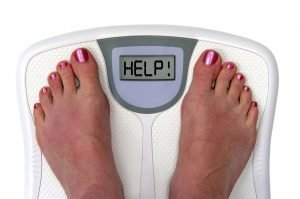Category: Health
 By: Jessica Kraft, APRN, PMHNP-BC
By: Jessica Kraft, APRN, PMHNP-BC
Lindner Center of HOPE, Psychiatric Nurse Practitioner
Seasonal affective disorder (SAD) is a type of depression that is more isolated to the changing of the seasons. It can happen in the spring and summer but occurs most commonly in the fall and winter months. We know that everyone is going to have a bad day from time to time, and it’s not uncommon for some to face more challenges in the winter months when the weather is colder and the days are shorter. But when does this become a problem that requires intervention?
What are some of the common symptoms of SAD?
- Feeling down or depressed for most of the day, almost every day
- Less interest in hobbies, social activities, or things that have brought you joy in the past
- Decreased concentration at home and at work
- Fatigue, sluggishness, or low energy
- Sleeping too much or too little
- Changes in appetite (increased craving for carbohydrates) or changes in weight
- A general feeling of hopelessness
- Low self-esteem
- Thoughts of self-harm or suicide
It is hard to estimate the number of people who have SAD, as many do not know they have it. It’s also thought that the number in recent years has been higher due to the COVID-19 pandemic. Women can be at higher risk for developing SAD as well as those who live further north. SAD most commonly develops in young adulthood, it often runs in families, and can often be co-morbid with other mental health conditions including depression, bipolar, anxiety, ADHD, and eating disorders.
It is not entirely understood what causes SAD, but research indicates that people with SAD may have reduced activity of serotonin, too much melatonin production, or even vitamin D deficiency. Changes in these areas may impact the body’s daily rhythm that is tied to the seasonal night-day cycle. Negative thoughts and feelings about the winter and its associated limitations and stresses are common among people with SAD, as well as others. It is unclear whether these are “causes” or “effects” of the mood disorder, but they can be a useful focus of treatment especially when seeking therapy.
If the above symptoms start to interfere with day-to-day life, it may be beneficial to seek out care for SAD. For some it may be ideal to start with their primary care provider in order to rule out other medical conditions that could be responsible for symptoms of SAD including alterations in thyroid hormones, low blood sugar, anemia, or viral infections like mono. If there is not an identifiable medical cause, seeking psychiatric help may be beneficial.
What are some of the common symptoms of SAD?
- Light therapy – a common approach to SAD since the 1980s. The thought is that exposure of bright light every day can supplement the lack of natural sunlight/sun exposure in the winter months. Sitting in front of a light box of 10,000 lux daily during the winter months in the morning can be a helpful intervention.
- Talk therapy – the most common type of talk therapy for SAD is cognitive behavioral therapy (CBT).
- Vitamin D supplementation – there is mixed research on how helpful supplementation of Vitamin D is for SAD but some find it helpful and a good option to try prior to trying a psychiatric medication.
- Psychiatric medication – for those who haven’t seen much improvement with light therapy or CBT, psychiatric medication can be an option including SSRIs (Prozac, Zoloft, Lexapro, etc.) or Wellbutrin. It is important to keep in mind that treatment with one of these medications may take several weeks in order to be efficacious, for some up to 6-8 weeks.
- When doing research on this topic I came across many anecdotal stories from those struggling with SAD and what interventions they tried and found helpful. Some examples included going outside more often, taking a trip, caring for something like a plant or a pet, finding a new hobby or interest, staying social, creating new rituals, consistent exercise, quality nutrition, good sleep, and maintaining a consistent schedule.
What are some of the common symptoms of SAD?
One of the helpful things about treating SAD is the predictability of when symptoms set in compared to other sub-types of depression that are much more variable. Unfortunately there is little research answering the question of whether or not this can be prevented or if there is a significant benefit to starting treatment early. Of the limited data available the medication Wellbutrin was found to be the most helpful intervention to start early.
Sources:
https://www.nimh.nih.gov/health/publications/seasonal-affective-disorder/index.shtml
https://www.psychiatry.org/patients-families/depression/seasonal-affective-disorder
https://www.yalemedicine.org/news/covid-19-seasonal-affective-disorder-sad
https://www.ncbi.nlm.nih.gov/pmc/articles/PMC7302868/
https://www.sciencedirect.com/science/article/pii/S2215036620303072






 Jennifer L. Farley, PsyD
Jennifer L. Farley, PsyD







